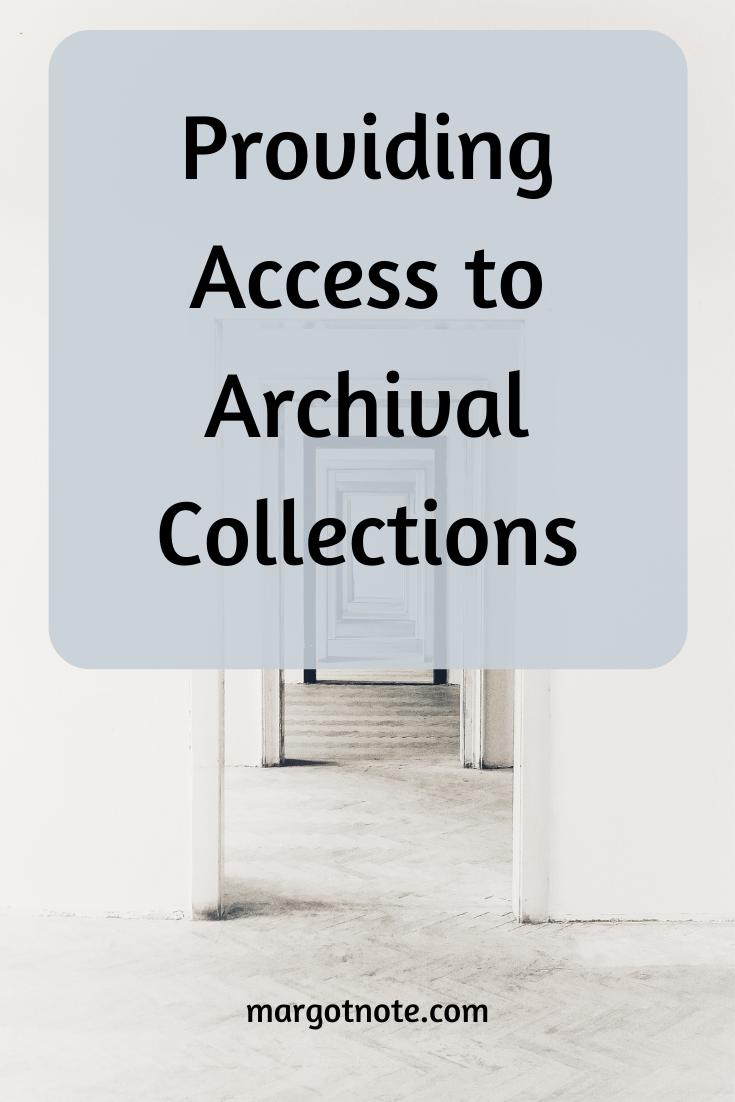Archivists have always cataloged their collections. In the past, repositories had card catalogs and catalog level descriptions in published repository guides.
Some catalogs followed library rules of the time, and some followed idiosyncratic styles. The one-of-a-kind nature of archival materials guided the descriptive tools—such as finding aids, registers, or inventories—created to provide access to them.
The excuse for the lack of consistency was that archival materials were unique. In addition, the advantages of copy cataloging, which drove library standards, were irrelevant to archives.
Information professionals at libraries and archives experimented with various computer applications before concluding that the Machine Readable Cataloging (MARC) format, as a structure standard, could serve the archival profession. There had been hopes that archivists could develop their descriptive standards, but the size of the profession and lack of resources made that unlikely.
So, while archivists have always cataloged, MARC forced archivists to regularize what they did in a couple of ways. Archivists had to define data elements, and they had to shift their approach to encompass the online catalogs and coordinate with other parts of the institution. These actions helped archivists learn library cataloging rules, including authorities for access points which led to more consistency.
Archival Cataloging
The descriptive catalog record is a surrogate for a cultural entity, but the catalog record differs from that for published works. In published works, the cataloger can transcribe predictable data elements, such as title and imprint information.
Instead, archivists must decide what to include in the record with archival materials, which comes from an understanding of their nature. They also must determine what features are significant enough to highlight for users in terms of the narrative parts of the record and the access points that connect users to that record.
As archivists moved beyond standard textual records, they ran into complexities. For example, with audiovisual materials, the physical characteristics are defined, such as recording, speed, tape density, and encoding format.
In general, cataloging archival materials is different from cataloging library materials because provenance or source defines the context and not publication data. In addition, information is abstracted, interpreted in terms of the material’s origins, arrangement, scope, and content.
It is also important to remember that archival principles apply. For example, collections, not items, are the units of analysis. Archivists can highlight individual items when appropriate, but archival description focuses on the aggregate.
Physical and Intellectual Arrangement
Collections can be physically and intellectually subdivided. Archivists identify or create and describe intellectual groupings within a collection. They start with the intellectual groupings and then have the physical arrangement follow that framework.
Archivists can create descriptions at any level of the intellectual hierarchy. Archivists describe at the collection level in terms of the biography of the creator or the history of the organization and the scope and content note. The level of description is usually what transfers from the inventory to the catalog level description. The main level of narrative description about the collection itself usually comes at the series level. The physical description that helps researchers identify the containers to request comes at the file unit level.
A Descriptive Dichotomy
A dichotomy exists between descriptive standardization and collection uniqueness, yet archivists strive to meet the common goal of control and access over records of enduring value. Archivists work with aggregates of material, defined by the principles of provenance and original order. Description reflects that disposition through the creation of the finding aid. Archival finding aids are the primary access tool for archivists. This document structure provides the most information about a collection, combining information about the material’s content, context, structure, and administrative details.
The blog was originally published on Lucidea's blog.
Get Started
Looking for archival advising, records management, and historical research services? Click below to speak with an expert consultant.































